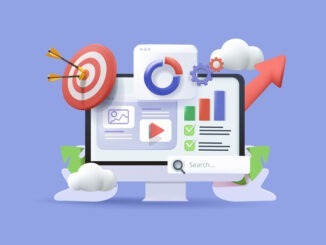Business software is undergoing a significant transformation, borrowing heavily from the familiar, inviting interfaces of social media platforms. This shift is not just about aesthetics; it’s about making software intuitive, reducing training time, and boosting productivity. Let’s explore how social media is reshaping business software and enhancing user experience
CREDIT: This is an edited version of an article that originally appeared on Business News Daily
What are UI and UX?
UI (User Interface): This encompasses everything a user interacts with on the software from a functional perspective, including buttons, menus, and other controls.
UX (User Experience): This is about the overall feel of using the software, including ease of use, satisfaction, and any frustration experienced.
Historically, consumer software has been far more user-friendly and attractive compared to business software. Consumer apps need to be intuitive and visually appealing to compete in a crowded market, while business software developers have often prioritised functionality and integration over design, relying on employee training to overcome usability issues.
The shift in business software
In recent years, business software has started to catch up, with many SaaS (Software as a Service) and cloud-hosted solutions now featuring user-friendly interfaces similar to consumer apps. Features from social media, such as gamification elements, @mentions, GIFs, and live notifications, are becoming standard in business applications.
Social Media’s influence
Social media platforms like Facebook, Instagram, and Google have blurred the lines between consumer and business tools. For instance, Facebook for Business and Instagram for Business leverage the intuitive nature of social media to create effective business tools. This crossover has led business software developers to adopt similar UI/UX principles.
Factors driving UI/UX changes
- Widespread computer use: With the proliferation of computers and mobile devices, everyone expects software to be as intuitive as the apps they use daily. This has pushed developers to create business software with better UI/UX.
- Employee influence: Employees now have more say in the software they use. Clunky software is often rejected in favour of more user-friendly alternatives, even if it means going rogue with unsanctioned tools.
- Increased competition: With a wide range of software options available, companies must prioritise user experience to stand out.
- Remote work: The rise of remote work has increased the need for flexible, accessible software, often provided through SaaS solutions and mobile apps.
- Smartphone proliferation: The explosion of mobile apps has made consumers more critical of UI/UX, influencing expectations for business software.
- Blurring lines: As the distinction between personal and business software fades, developers adopt user-first design approaches to meet these new expectations.
- Developer prioritisation: Modern developers are increasingly focused on user needs, driven by past failures and the visible success of user-centric design in the consumer market.
Benefits of good UI/UX in business software
Adopting business software with excellent UI and UX offers numerous benefits, including:
- Reduced training and onboarding time.
- Increased productivity.
- Higher employee satisfaction and morale.
- Fewer errors and workarounds.
- Improved retention.
Businesses need to carefully consider their software choices, prioritising user-friendly designs to enhance employee satisfaction and productivity. By adopting software that mirrors the seamless experience of social media platforms, companies can achieve greater efficiency and loyalty from their workforce.



Be the first to comment